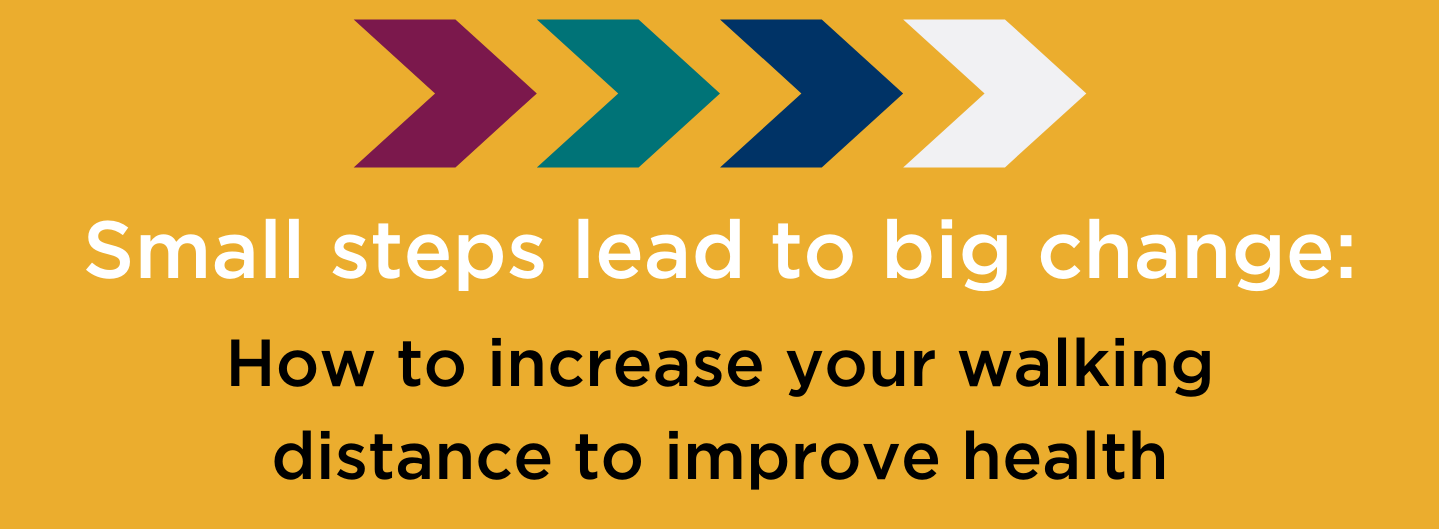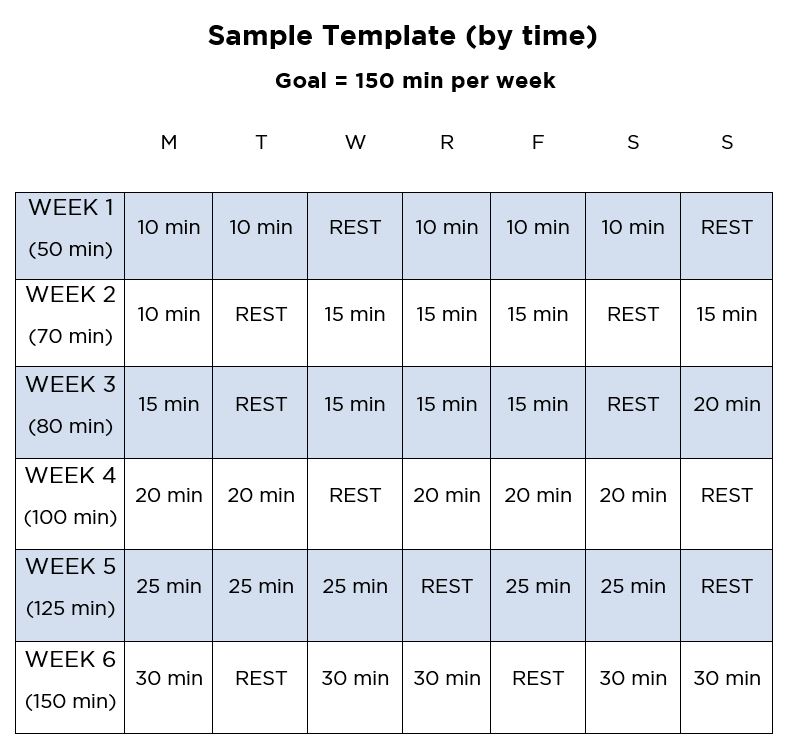Small steps lead to big change: How to increase your walking distance to improve health

Back to physical health resource hub
There are many benefits to a regular exercise program including better quality sleep, stress management and improved cardiovascular, brain and musculoskeletal function. In these novel times where our lives have been changed in many ways, a graded walking program is an excellent opportunity to incorporate exercise into our daily routine.
A graded walking program is a planned walking program with gradual increases in distance, speed and/or duration. These are done in intervals, or a set period of time, then repeated with the increase added to the next segment. An example of a graded walking program is:
- Week 1: walk 10 minutes at a comfortable speed
- Week 2: walk 15 minutes at a comfortable speed
- Week 3: walk 20 minutes at a comfortable speed
- Week 4: walk 25 minutes at a comfortable speed
Graded walking programs are useful because not only can you determine how fast you decide to progress, you also can decide how you to want to progress and your ultimate goal. The following steps (no pun intended) can help you create your own graded walking program.
Set a Goal
Your goal should include the amount of time and distance you want to walk. For example, your goal distance could be one mile or to walk to the last neighborhood mailbox and back. For a time goal, you can use the American Medical Association’s (AMA) recommendations of 150 minutes (2.5 hours) a week to guide the ideal amount of regular moderate-intensity exercise you engage in:
This can be broken out as:
- 20 minutes, seven days a week or
- 30 minutes, five days a week or
- 50 minutes, three days a week
Remember, this is your goal. Perhaps you cannot walk this amount at the beginning, but the graded walking program will help build you up to that amount of time.
Set a Progression
A good rule of thumb is to increase time, speed or distance approximately 5% to 10% each week. Your body needs time to adjust to the new activity so progressions should occur one at a time.
Examples of fun progressions include walking one further mailbox each time or listening to one more song than the previous walk. You can also increase by the exact percentage, such as:
- Week 1: walk 2,000 steps (10% of 2,000 steps = 200 steps)
- Week 2: walk 2,200 steps
Make sure you feel safe and supported
Safety is essential when it comes to starting a new exercise program. You need to contact your physician or trusted health care provider if you have any health concerns or would like specific advice from a medical professional. A few key safety tips to remember:
- Proper shoe wear – sneakers and athletic shoes are ideal. Make sure you feel supported and balanced. Don’t forget appropriate socks that cover your heels to avoid blisters.
- Remember sunscreen, a hat and other protective sun gear.
- Plan your route ahead of time and make sure you feel comfortable with the route. You can use apps such as MapMyRun or Google Maps. Avoid walking in low lit times of the day. If choosing to walk in the early mornings or late evenings/night, be sure to wear reflective markers, headlights and light clothing to be visible to others. A walking buddy is also a great way to stay safe during your walks.
- Stay hydrated before, during and after exercise.
- This program can also be performed on an indoor track or treadmill. The guidelines for the program are the same, just check with the environment to ensure safe performance.
Have fun and celebrate the small victories
Each small progression you make is an accomplishment and takes you closer to your goal. Be proud of each interval you complete and take your time. If you are unsure how to progress to the next level due to increased soreness or effort level beyond your comfort zone, stay at the same level as needed and try again when you’re ready. You can move up to the next level when the current level becomes easier.
Have fun with your graded walking program and celebrate you’re your wins along the way.



